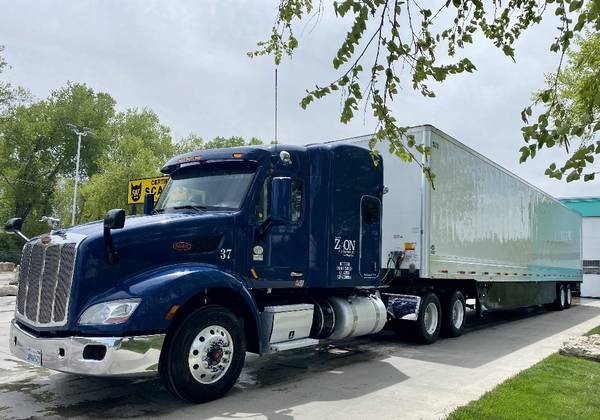Freight shipments by truck, ship, train, and plane are the four primary modes of transportation used in logistics. These modes of transportation are also referred to as road, maritime, rail, and air shipments. Despite the fact that each of these forms of transportation has its own set of advantages, determining which is the most appropriate for your company requires careful study.
The four types of logistics transportation by San Diego shipping company are discussed in this guide will help you select your preferred one.
How to Select the Most Appropriate Type of Logistics Transportation for Your Organization
With fast shipping becoming more and more of an expectation in today’s world, selecting the most appropriate type of logistics transportation for your company is critical to the profitability of your business, as well as to the product’s safety while in transit, and the satisfaction of your consumers. Take into consideration the following factors before making your final decision on a logistics transportation method, and utilise the information to influence your decision-making:
- The Finished Goods
To begin, examine the shipment that you are shipping. Is your product potentially toxic, perishable, or difficult to handle? Is it possible to find out the size of the shipping container? This information is essential for selecting a shipping method that will accommodate your merchandise while remaining within your budget.
- Location
Now consider two locations: the site from which the shipment is departing, as well as its final destination:
- Origin of shipment:
From what location are you shipping? It is critical to know where you or your products are located because this will serve as the starting point for your mileage tracking. If so, do you have access to any ports of entry, railroad lines, or airports?
- Boundaries:Are you shipping across international borders and need specific clearance from the government? Exactly what natural borders will your shipment traverse is unknown. While one mode of transportation may be the most appropriate for your product, it may be more expensive and time-consuming than other modes if you are not placed in close proximity to these alternative modes of transportation.
- Shipping destination: To whom are you sending your package? It is one of the most important considerations to take into account the shipping destination. Calculate the total shipping distance, taking all stops and checkpoints into consideration.
- Budget: How much money do you have set aside for transportation? However, for long-term operations, sticking inside your budget is essential to ensure that everything runs smoothly.
Understanding the variations between various modes of transportation is essential to determining the best option for your company. Here is a breakdown of each mode of transportation, along with its advantages and disadvantages:
- The first type of truck freight is road transportation.

Compared to the days of horse and waggon exports, road transportation has advanced significantly. Truck freight accounts for more than 54 percent of all northern border freight transported between Canada and the United States on an annual basis. In sectors that demand quick, modest products delivered directly to a business, warehouse, or consumer’s door and are prepared to deal with potential delays, truck transportation is the best option available.
In trans-border truck shipment, the top three items sent are computers and computer parts, electrical machinery and vehicles, and motor parts and components. Grocery and retail, eCommerce, construction, and agriculture are among the other industries that rely on truck freight for their deliveries.
Despite the various advantages of truck freight, there are a few crucial aspects to consider before making the decision to use truck freight, including the following:
- In terms of time, truck freight might take longer and is more vulnerable to shipment delays than other modes of transportation. On major highways, the average truck drives at a speed of approximately 50 to 60 miles per hour. Other variables, such as road closures, inclement weather, or excessive traffic, might have unpredictably negative effects on delivery schedules, as well.
- Control Because of the way truck freight operates, you do not have as much control over how your products are transported. Road transportation can be difficult for some shipments, and some logistics companies may mishandle your merchandise — which is why it’s critical to engage with a reputable logistics company that has received accolades and received positive client feedback.
2. Ship — Transportation by Waterway
Ocean shipping accounts for more than 90 percent of the world’s total commerce economic activity. The United States alone is reliant on sea transportation for about 70% of all international merchandise trade, according to the International Trade Administration. Whenever your company requires transportation for large, heavy cargo — or transporting from one country to another – ship transportation is almost always the most cost-effective option.
The cost of shipping is a fraction of what it would be for air transportation, and ships can handle significantly bigger loads. The preferred mode of transportation for huge commodities shipped in vast quantities, such as metals, agricultural products, building supplies, and other items that cannot be transported in a reasonable amount of time by plane.
3. The third mode of transportation is the train.
Since the introduction of the railway, trains have played an essential role in the transportation of goods and the movement of people around the world. Rail freight accounted for approximately 15% of northern border freight between the United States and Canada as of January 2020, with the main three goods being motor cars and components, mineral fuels, and plastics ranking first through third, respectively. Rail transportation is an excellent choice for businesses that require scheduled ground freight that is delivered quickly.
4. The fourth mode of transportation is the plane (aviation).
Air transport is the most recent shipping technique, yet it is typically the greatest option if you need your package delivered quickly and without compromising on quality. Air transport is readily available throughout most of the world and is particularly well suited for shipments that must be delivered swiftly over vast distances, including internationally. Compared to rail and ship freight, air transportation has a much larger scope, owing to the fact that it is a rapidly increasing business with several thousand airports and landing strips in operation throughout the world.



